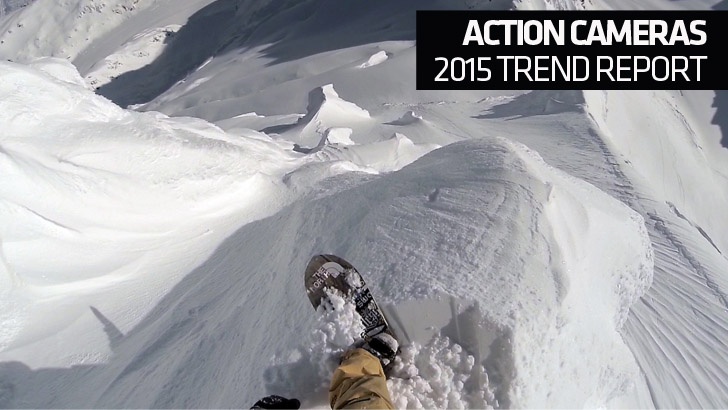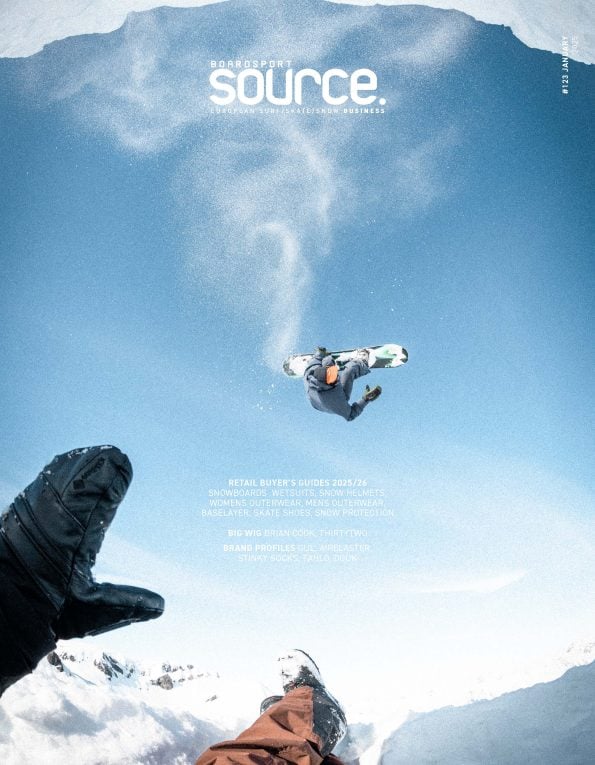Action Cameras 2015 Trend Report

Whether you’re at the beach or in the mountains – every one and their mum seems to have a little device stuck to their heads, chest or board. How big of a trend action and sport cameras have become is no secret anymore, but what are the trends inside the trend? By Anna Langer. Top two pics courtesy of GoPro, bottom two from Contour.
 General Trends
General Trends
Over the last couple of years, action cameras have established themselves as prime accessories in our industry and other (action) sports, with the trend developing far beyond that. “Nowadays, action cameras appeal to a much wider target group. Grandparents shooting their grandchildren’s first steps, dog owners who want to experience their pet’s perspective: many people use our camera to shoot their every day adventure,” explain Garmin with Ion adding that “video taking is going beyond just the thrill seeker”. Rollei even expect up to 25% growth in Germany alone. Especially paired with expansion of social media, as Contour add: “The market is continuing to grow rapidly as more and more people adopt social media and integrate sharing videos of their adventures.” Drift predict action cameras to take “market shares from regular camcorders” but warn that this will make the market “very competitive”, with “too many actors trying to get a cut of the cake.”
Size and quality continue as vital factors, although the “race for more pixels” (Drift) and more compact products (Sony) brings other features into play as well. Like battery life, that is essential to use the camera in the first place. Hence GoPro are not only “constantly innovating to introduce even sharper images, higher frame rates and resolution” but also “improving battery life.”
Since cameras have become “more of a fashion accessory” than just a recording device, and HD is offered as standard, looks are becoming important too. Back in the day, “it didn’t use to matter how silly someone looked because they were happy to just be able to record. Now that it’s mainstream, getting the camera looking good while you are wearing it, and getting them ‘out of the way’ is key,” says Contour.
 Technical Features
Technical Features
Increased connectivity is a feature many brands are experimenting with. With the world being ruled by smartphones and tablets, devices need to be compatible with as many others as possible. “We build Wi-Fi and ANT+ interfaces into our cameras so that they can interact with other devices” state Garmin. Their Elite model even has a GPS module and also Ion expand on their GPS line.
Simplification is another big trend, “since nobody likes to study big manuals before shooting the first clips” (Garmin). “Let athletes focus on their sport” say Contour and are backed up by Drift’s customer feedback: “people prefer a small, easy to use and feature rich camera over top video quality” that is complicated to handle. Hence most brands aim to “strike a balance” between size and quality, which “are both very important aspects” (Rollei).
HD filming has already become a standard and is featured in all models of the brands interviewed. Frame rates vary between 60 and 120 frames per second in different resolutions, with Rollei, Sony and GoPro stocking up to Ultra High Definition (4096×2160 and 2704×1536), the latter offering twice the performance with their new GoPro Hero 4 released this Autumn with a new processor for faster frame rates and improved image quality.
 Except for Contour, who just released the world’s “easiest to use” camera with their new Roam 3 that is waterproof to 30 feet, “maintaining simplicity”, most brands use small, 1.4’’-2’’ displays to preview framing, change settings, check status and maybe even playback footage. With or without, these functions can also be controlled via smartphone and the respective app, which all brands offer for free, some even including a desktop version with editing features (GoPro, Garmin, Sony & Contour). Through the respective app, the phone also turns into a remote control, starting or stopping the recording and changing settings. All brands include them or offer as optional extras. Drift work with radio frequency instead of Wi-Fi, to save battery life, and Garmin’s little helper is “water resistant for up to 10 meters”. Rollei’s remotes have a reach of up to 40 meters and Sony packed theirs up in a neat little “waterproof wristwatch-style” device.
Except for Contour, who just released the world’s “easiest to use” camera with their new Roam 3 that is waterproof to 30 feet, “maintaining simplicity”, most brands use small, 1.4’’-2’’ displays to preview framing, change settings, check status and maybe even playback footage. With or without, these functions can also be controlled via smartphone and the respective app, which all brands offer for free, some even including a desktop version with editing features (GoPro, Garmin, Sony & Contour). Through the respective app, the phone also turns into a remote control, starting or stopping the recording and changing settings. All brands include them or offer as optional extras. Drift work with radio frequency instead of Wi-Fi, to save battery life, and Garmin’s little helper is “water resistant for up to 10 meters”. Rollei’s remotes have a reach of up to 40 meters and Sony packed theirs up in a neat little “waterproof wristwatch-style” device.
Outlook
The market for action cameras is growing strong with no end in sight, as GoPro conclude: “The performance of wearable and gear mountable cameras is constantly improving at a rapid rate.” Garmin see a big future for accessories: “There are a number of different usages and adventures that can be recorded – and all users need the right equipment to suit their habits.”








